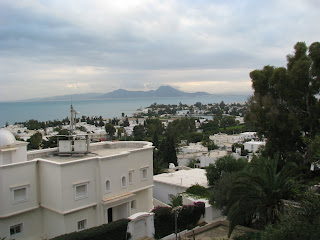
Watching the news today, I am shown images of Berlusconi going to court; a plane crash in Poland; Lebanon's government falling apart; Sudan on the brink of a breakup; an eruption of Mount Etna in Italy; terrible flooding in both Australia and Brazil; and intense rioting in Tunisia. All big news, but it was this last news story that captured most of my attention, considering the content of my last post.
When we were standing on the streets of Tunis a little over a week ago, we were oblivious to the level of anger around us. But it seems that the expression “got out in the nick of time” might be the most appropriate way to follow up on my Tunisia travel post. When we arrived back in Amsterdam we were a bit surprised to turn on the news and hear about a protest turning violent in a smaller inland Tunisian city that had likely happened while we were in the air flying home. I’ve watched it escalate in the news since then, taking interest mostly because of the narrow escape it seems we made. Today the riots are at their worst, and I read in the Dutch news that 145 Dutch tourists are being prematurely sent home from their vacations.
Glad we weren’t sent home from our vacation.
The problems being reported from there include widespread unemployment, particularly among the young graduates, high costs, and stifling online bans. I sit here on my comfortable sofa watching live images of people in Tunis throwing rocks amidst the sound of gunfire. And I still have Tunisian sand in my shoes. Of course I am glad that it was quiet and safe while I was there. But it is a baffling illustration of the unpredictability of travelling in a place where I know very little about. Quite a lot can be bubbling under the surface, apparently.
What is happening is terrible. But I look at it this way - the Tunisians are standing up for what they want, demanding change, and it might be a bit ugly for a while. It isn’t the first time in history something like this has happened. And we were there, right when it all began, a part of history.
Tunis in the news today:

http://english.aljazeera.net/indepth/spotlight/tunisia/

